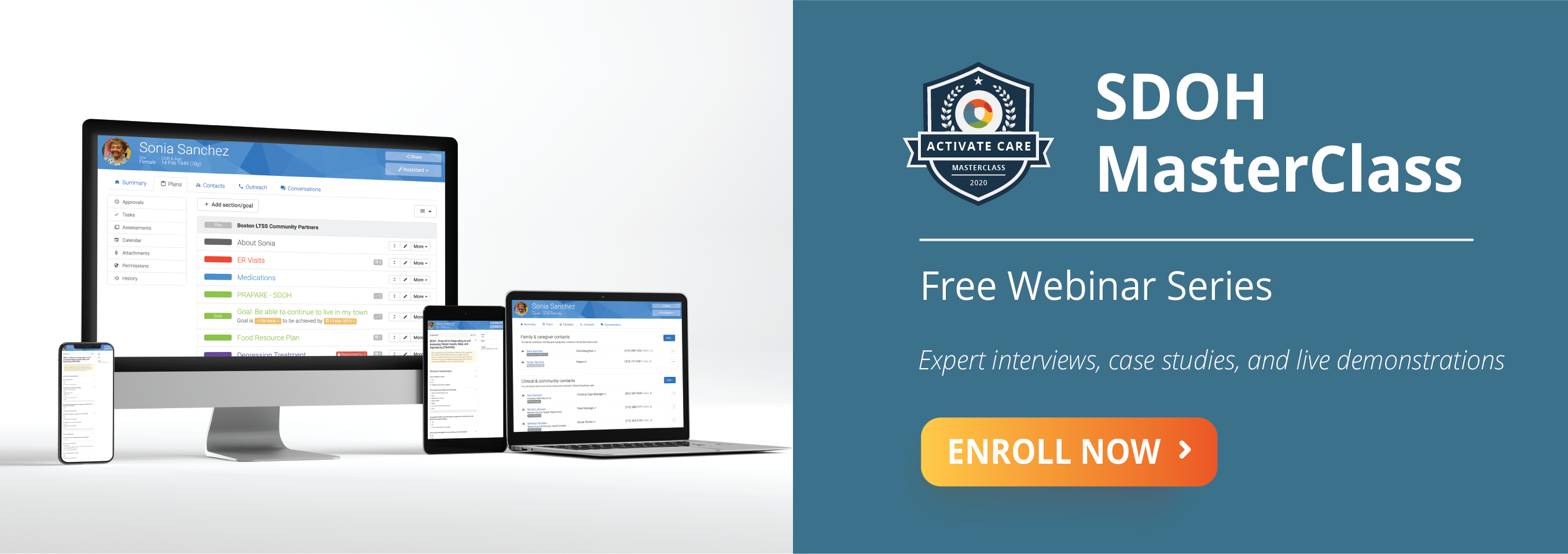With the United States now in the mitigation phase of the coronavirus response, officials are warning that we should expect significant changes to our normal lives. Strategies like social distancing and containment are coming into effect in more parts of the country, which will save lives by reducing the peak impact of the outbreak.
As critical as these strategies are, they will also exacerbate already-difficult living conditions for people experiencing homelessness, job insecurity, food insecurity, chronic conditions, and mental health challenges. While this happens, local governments and safety-net organizations will be stretched even further to respond to more individuals in need of social services.
The coronavirus pandemic will cause far-reaching impacts to our society's health and well-being, for years to come:
Homeless people are at "double risk"
More cases of coronavirus are being labeled community-spread, meaning they were not linked to international travel or contact with an international traveler – a trajectory that could prove to be a "very, very serious situation for the homeless population," said Jimmy Jones, executive director of Oregon's Mid-Willamette Valley Community Action Agency.
- In western states like Oregon, Washington, and California, government reported cases of coronavirus are among the nation's highest tallies; meanwhile, their homeless populations are all in the top ten by quantity, nationwide.
- The same factors that make homeless populations more vulnerable to tuberculosis and hepatitis C – crowded living conditions and lack of handwashing options, among others – make it difficult for people experiencing homelessness to heed all the healthcare advice that's coming out right now.
- According to Chunhuei Chi, director of the Center for Global Health at Oregon State University, this poses a "double risk" to an already vulnerable population: not just for themselves, but those around them. Communities are already re-assessing their approach to community meals and temporary housing.
The safety net is being tested
Across the country, schools are stepping up closures, universities are turning to online courses, and employers are imposing travel restrictions and remote working requirements. These disruptions in daily life will negatively impact millions of Americans like Azia Jenkins, who escorts children for supervised visits on behalf of Washington State's Child Protective Services. Jenkins told Time that she faces a stark choice: "Either I stay home, and I miss out on money, or I continue to work and I get sicker and sicker or I get other people sick."
- Only about 20% of American workers have access to benefits like paid family and medical leave, according to the Center for Economic and Policy Research, and if staying home puts their job at risk, then unemployment insurance is often their first line of defense.
- “Most people getting SNAP [supplemental nutrition assistance program, formerly food stamps] work in retail or hospitality, and if there were to be effects, it would hit them first if stores and restaurants close temporarily and workers are not paid," says Joel McClurg, policy and communications manager for Colorado Blueprint for Hunger.
- With many children and families being economically dependent on school lunches, California's Gov. Gavin Newsom took action to allow school meal programs to run even if a school is temporarily closed, but food banks and homeless shelters on the West Coast are already "running low on funds and cleaning supplies" tweeted Bethany Vick of Providence Health & Services.
The long haul begins now
Depending on the severity of their illness, people with confirmed cases of coronavirus infection are either isolated in the hospital or at home until they no longer test positive for the virus. How long that takes can vary; according to NBC News, one individual in Humboldt County, California, was released from isolation nine days after the case was announced; another, in Chicago, was in isolation in the hospital, and then at home, for about a month.
At another Washington hospital, EvergreenHealth Medical Center, located just two miles away from the Life Care Center nursing home dubbed by CNN as the epicenter of the coronavirus outbreak – officials reported that of the 60 coronavirus patients treated at the hospital, 15 patients have now died. On the other hand, 18 patients who were being treated there have become well enough to be discharged. While hospitals prepare for the influx of emergency department admissions that is expected to come with the peak of the outbreak, they must also plan for the safe discharge of patients treated for coronavirus disease back out into the community.
At another Washington hospital, Harborview Medical Center, Dr. Maralyssa Bann is the Associate Medical Director for Acute Care. Following several weeks on the front lines of her hospital's response, she shared several tweets to reflect on her experience. Dr. Bann proposed that a "broad conversation needs to be had regarding individuals returning to group settings such as nursing facilities, adult family homes, homeless shelters, and jails" and that it is important to "involve guidance from public health and other community resources because our healthcare system and post-acute care settings are interwoven, so as much as we can do to support each other the better."
Enroll in Activate Care's SDOH MasterClass Webinar Series and learn how to take advantage of the newest features and tools available for communities to implement such as resource directories, referral management, and Community Scorecard reports.
